| |
|
|
| |
Angling pressure quiet at the moment.
Wed 17th December, 2014
|
|
|
|
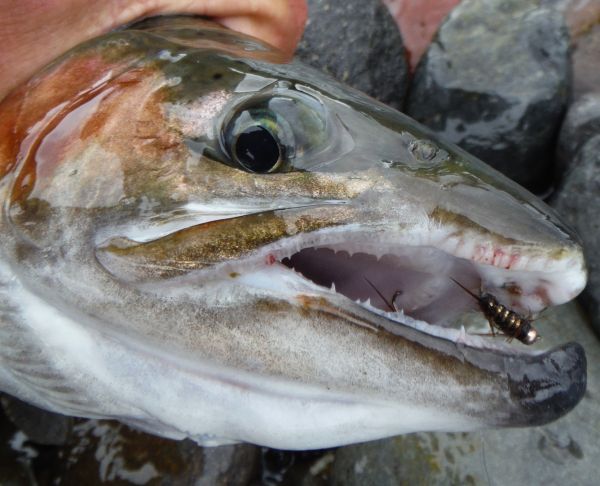 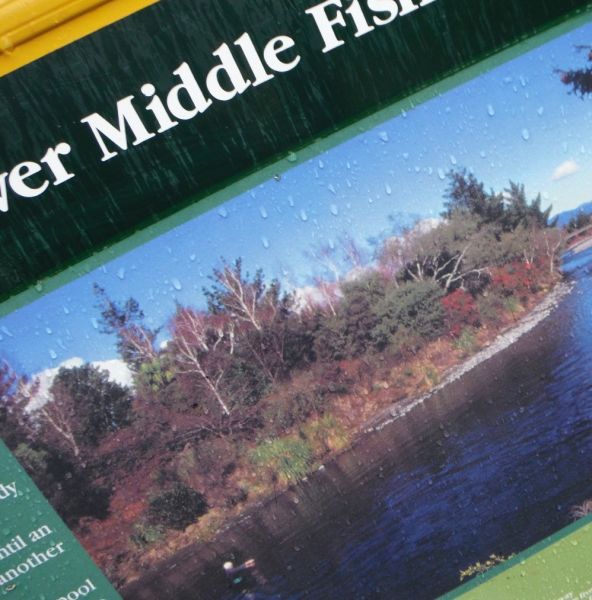
Well ... right on cue the rain arrived and we've had showers on and off since dawn. This weather pattern is expected to continue for several days and the damp humid conditions will provide ideal conditions for emerging insects ... especially day time hatches of mayfly.
Anglers fishing the evening rise have had great sport all week using dark caddis and with little or no wind this should get even better.
As we approach the New Year expect the cicadas to begin appearing along the river. I heard my first yesterday when "summer" turned up for one day. Boy was it hot! ... I was glad to be wet wading.
And I've caught a couple of fish this week with other anglers flies in their mouths. The gold head fly in the trout's mouth above isn't mine ... you can just see my nymph behind it. A couple of days before I'd landed another with a pheasant tail hanging out the side of its mouth.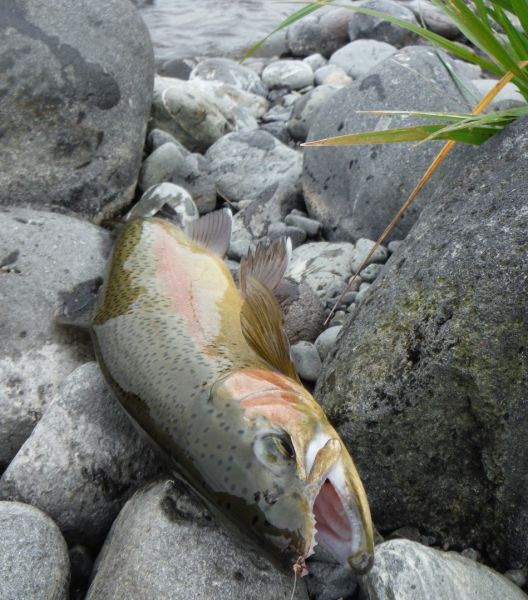
Still plenty of fish around although some of the jacks you catch will be a bit the worse for wear.
Male steelheads go through a tough time during the spawning runs. The act of spawning itself, and trying to defend the female from other males all takes a toll and not all of them will survive.
They'll often go through all this with more than one hen ... no wonder they look beat up and knackered.
Angling pressure is almost non-existent at the moment and it will probably stay like that until after the big day. Make the most of it because it was the same last year but the post Christmas period was the busiest I'd ever seen Turangi.
Greg Jacobs from the USA fished the North and South Island a few months ago and often keeps in touch. The fish pictured below were caught on a recent trip on the Trinity River.
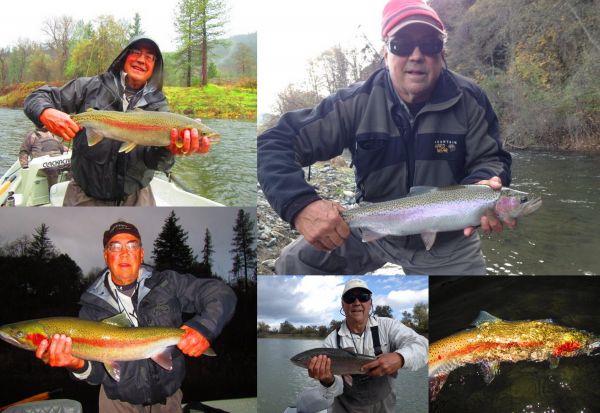
"First a Merry Christmas to you all. Again thanks for wonderful days on NZ waters, that still haunt my thoughts. The best I could do was to head to Northern California and try for some Steelhead. I got some of these fish over hundred miles from the Pacific Ocean, on the Trinity River. There are also trout sized Steelhead called "half pounders" (12 to 18"), and some very large Brown Trout in the river with these migrating fish. There are not many fish in the Trinity system despite lots of recent rain, and folks are worried. They have been declining in number the past few years. These fish were caught drifting small flies under strike indicators while in a drift boat. They really fight." Greg J.
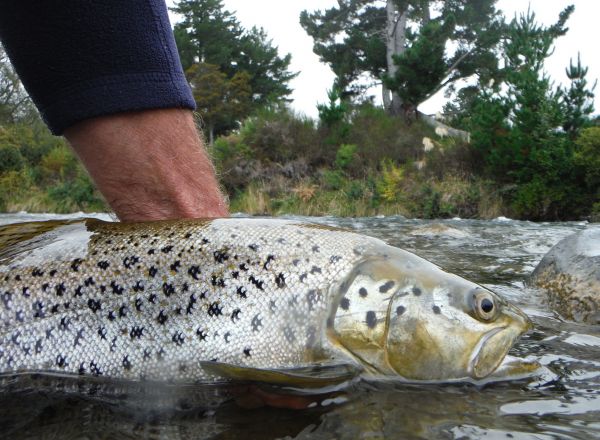 There will be plenty of browns caught in the Tongariro over the coming months so this is repeated from last March. There will be plenty of browns caught in the Tongariro over the coming months so this is repeated from last March.
Anglers who consistently catch brown trout on the Tongariro don't usually do so by accident.
They have a good local knowledge of the river and know where, when and how to give themselves the best chance of hooking up.
Depending on the conditions and time of year its possible to catch browns on all of the methods in common use on the Tongariro and everyone has their favorite spot.
Some are caught after a long hike downriver in daylight, others just a few meters from the road bridge after dark, the furthest upriver I've personally seen them caught is near the Blue Pool, although I was in Creel the other day and Grant showed me some footage he'd shot of a nice fish being landed in the Fence Pool.
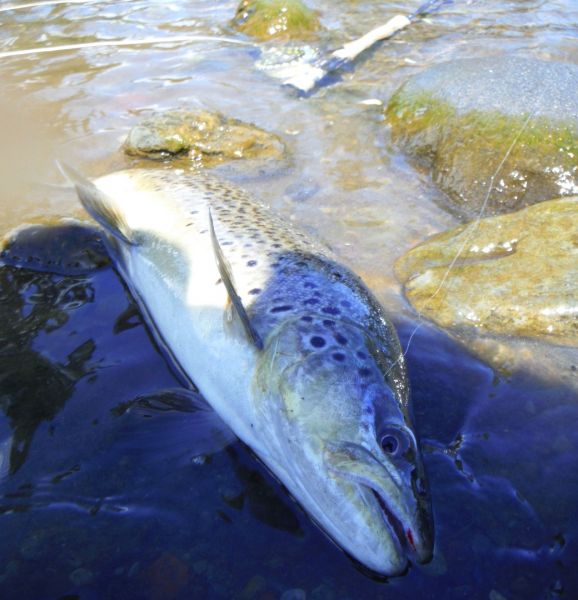 But a lot of visiting anglers don't have time to spend hours yomping downriver and if you're with the family I bet Mrs Joe Bloggs won't be too happy about you fishing half the night either. But a lot of visiting anglers don't have time to spend hours yomping downriver and if you're with the family I bet Mrs Joe Bloggs won't be too happy about you fishing half the night either.
So how do you give yourself a fighting chance of hooking a good brown if you're pushed for time.
Well ... first of all concentrate your efforts between the town pools and Red Hut ... Jeeees! ... thanks a bunch I here you say ... that cuts it down!
If you've been fishing for a little while you'll know by now that not all parts of a river routinely contain fish. If you're an upstream nymphomaniac like me as you work through a stretch you'll be constantly scanning the water ahead for likely fish holding spots and more often than not sub-consciously rejecting a lot of it. Reading water. So already a fair chunk of that stretch between town and Red Hut has been eliminated ... you can fine tune your choice and narrow it down even more.
There are studies that show browns prefer an average depth of about twenty five inches when feeding ... I must stress that's an average depth ... and half that depth when actually spawning.
Like rainbows they also tend to seek out faster well oxygenated water to spawn and the same study mentioned a mean velocity of 31.7 cubic meters per second. Spawning aside the rest of the time browns prefer water with a mean velocity of around 26 cubic meters per second and are usually found in slower parts of a suitable stretch off to the side rather than in the main current. You'll often spot them lying close to the bank tucked under overhanging foliage or where a rock, log or some sort of structure disturbs the rivers flow and affords them some shelter.
Unlike rainbows they won't stay in fast water for long periods ... even if they're spooked into it.
I generally ignore most but not all of the more popular pools. Places like Admirals, Cattle Rustlers or Duchess have lookouts above them and you'll often easily spot big browns lying in the depths.
But even if you are tempted to have a go at them, in some of these pools a combination of variable surface currents and underwater hydraulics make it extremely difficult to present a fly convincingly ... unless you're a pretty skilled angler. It also pays to remember the deeper they are in the water the better their view of the outside world and as you get closer if you can see them its a fair bet they can see you... so whats left.
Look for water like this ... it can be found at the head of some pools or in the runs between pools.
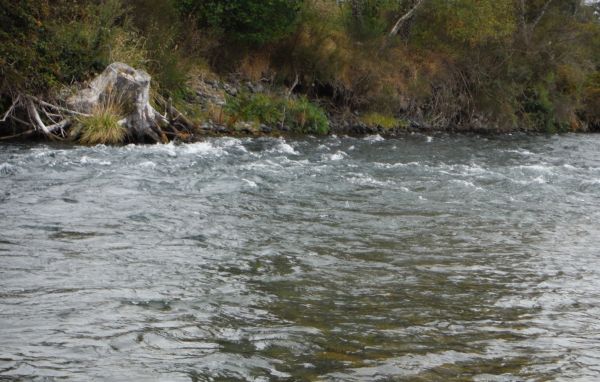 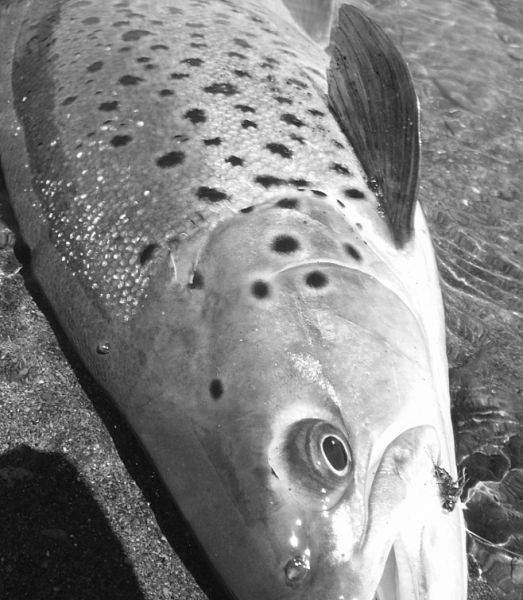
Most of the browns I've ever hooked in the Tongariro have come from from places like the one pictured above. But both browns and rainbows will be found along the seam line that separates the fast and slow water. The river here is less than four feet deep and whenever I nymph this type of water my preference is the long dry and dropper. All of the browns pictured were caught using it in very similar looking water but in different parts of the river.
So whats the best time of day to catch a brown trout on the Tongariro.
Well ... we're all familiar with the old guideline "that fish bite best at times of changing light" and this is generally very good advice.
I can only tell you what I've experienced ... ninety per cent of the ones I've caught have been between 11.00 am and 2.00 pm
May be I only catch the lazy ones!
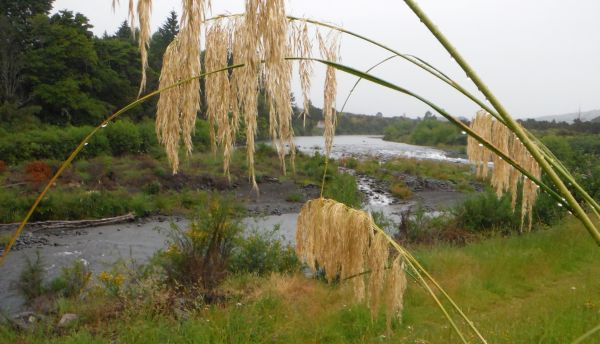
Tight lines guys
Mike.
Update 7.30 pm :
More heavy rain for the last couple of hours which is forecast to ease overnight. This has increased the river flow a little to 26 cumecs and climbing. |
|
|
| Back to Top |
|
|
|
|
|
|
|